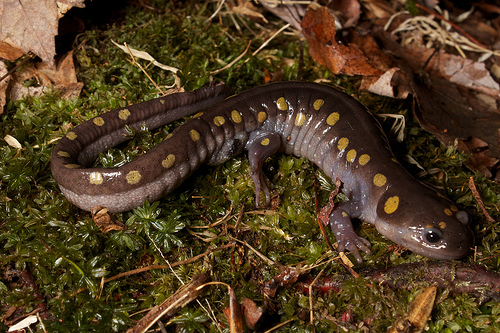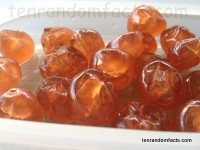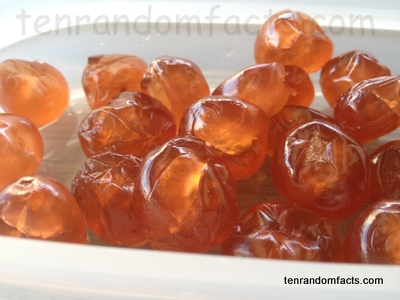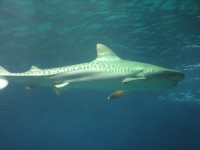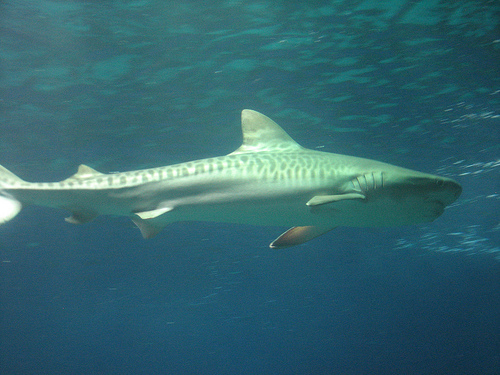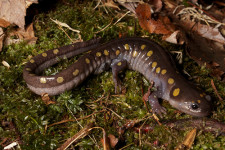
Did the spotted salamander lose a body part? No problem! It can be regenerated.
- A spotted salamander is an amphibian that moves through a metamorphosis process, from a water dwelling creature to one that spends its time on land, except for breeding purposes.
- Adult spotted salamanders can grow to lengths of 15 to 25 centimetres (5.9 to 9.8 inches), and they look similar to a lizard due to their short legs and tail.
- Spotted salamanders are native to the United States and Canada, in North America, and are also known as ‘yellow-spotted salamanders’ and have the scientific name Ambystoma maculatum.
- Spotted salamanders are nocturnal and live among rocks, logs, leaves, or in abandoned burrows in forest habitats, that contain temporary water sources during the rainy season, and they usually stay hidden unless it is damp or raining.
- Spotted salamanders have the family name Ambystomatidae, the family of mole salamanders, and are one of the 32 species of the genus Ambystoma, the only genus in the family.
Spotted Salamander
Image courtesy of Brian Gratwicke/Flickr
- Spotted salamanders are primarily coloured black, but they can also be dark blue, brown, grey or green , and they are patterned with yellow to orange spots.
- Female spotted salamanders lay an average of two hundred eggs in temporary freshwater ponds that lack much wildlife, like fish, during the rainy season, typically breeding in the same hole annually, reached by the same route.
- When threatened, spotted salamanders release a poisonous substance on enemies, although they generally prefer to stay out of danger by hiding.
- Spotted salamanders can regrow body parts, from organs to limbs, and while they only have up to a 10% survival rate in the pool of water, once they change to their adult form they can live to 20 or 30 years.
- Spotted salamanders’ diet mainly consists of spiders, insects, bugs, worms and slugs that they catch with their sticky tongue, and they are preyed upon by snakes, birds, raccoons and other creatures.
Bibliography:
Spotted Salamander, 2014, National Geographic, http://animals.nationalgeographic.com.au/animals/amphibians/spotted-salamander/
Spotted Salamander, 2014, Wikipedia, http://en.wikipedia.org/wiki/Spotted_salamander
Stout, N. and G. Hammond, Ambystoma maculatum, 2007, Animal Diversity Web, http://animaldiversity.ummz.umich.edu/accounts/Ambystoma_maculatum/




